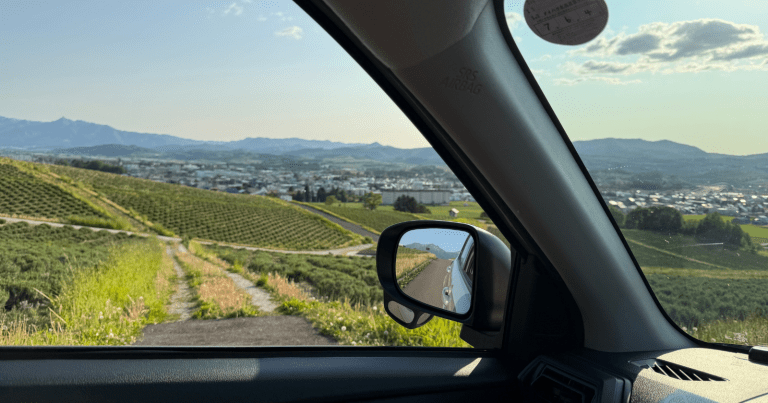
As a long-term Asia dweller, I’ve logged countless miles on two wheels across this incredible continent. There’s a unique thrill and unparalleled freedom that comes with exploring a new destination on a scooter, especially in a place like Thailand. Imagine zipping past rice paddies, discovering secluded beaches, or navigating charming backroads with the wind in your hair – it’s an experience that truly elevates your journey. However, this liberating mode of transport comes with its own set of considerations. That’s why this Thailand scooter rental guide is your essential pre-ride briefing, designed to empower you with the insider knowledge you need to enjoy the ride safely, affordably, and without a hitch.
For independent travelers, backpackers, and anyone seeking to genuinely connect with Thailand beyond the typical tourist trails, renting a scooter is often the key. It allows for spontaneity, reaching places public transport simply can’t, and uncovering hidden gems at your own pace. But here’s the crucial part: you need to approach it with preparation, respect for local customs, and a healthy dose of caution.
My goal here is to share highly practical, actionable tips and strategies, helping you avoid common pitfalls and make better decisions on the road. By the time you finish reading, you’ll feel confident and ready to embrace the open road. So, let’s get you prepped to ride like a seasoned local.
Why a Scooter is Your Best Bet (and Where)
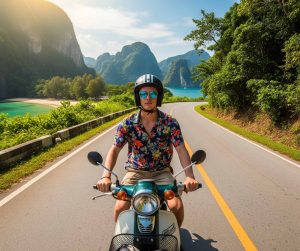
First things first, let’s talk about where a scooter truly shines in Thailand. While the thought of weaving through Bangkok’s infamous traffic on a scooter might sound like an extreme sport (and generally, I’d advise against it due to the sheer volume, aggressive driving, and excellent public transport options), it’s an absolute game-changer in the north and on the islands. In cities like Chiang Mai, Pai, or Mae Hong Son, a scooter offers unparalleled freedom to explore temples outside the city center, discover scenic viewpoints, and navigate local markets with ease.
On the islands – think Phuket, Koh Lanta, Koh Samui, or even the less-travelled secret islands in Thailand – a scooter transforms your experience. You can hop between beaches, find amazing viewpoints, and explore remote coves that are inaccessible by foot or songthaew (shared taxi). It’s the ultimate way to escape the crowds and truly customize your itinerary.
The Golden Rules of Rental: Documents, Deposits & Diligence
Renting a scooter in Thailand is remarkably easy, which can be both a blessing and a curse. The ease sometimes leads to complacency, which is where travelers often run into trouble. Here’s how to do it right:
Your Passport: A Non-Negotiable Boundary
This is perhaps the most crucial piece of advice I can give you: NEVER, EVER hand over your original passport to a scooter rental company. I repeat, never. This is a common tactic used by unscrupulous operators to hold you hostage should any dispute arise, particularly over damage. They’ll demand exorbitant fees, knowing you can’t leave the country without your passport. Instead, always offer a photocopy of your passport. Most legitimate rental shops in tourist areas understand this and will readily accept a copy along with a cash deposit. If they insist on keeping your original, walk away. There are plenty of other rental places that will respect your boundaries.
International Driving Permit (IDP)
Technically, to legally ride a scooter or motorbike in Thailand, you need an International Driving Permit (IDP) that specifically covers motorcycles (Category A). Your standard car driving license from back home isn’t enough on its own, even if it allows you to ride a scooter in your country. While many rental shops won’t ask to see an IDP, the police at checkpoints certainly will. Fines for riding without the correct license typically range from 500 to 1,000 Thai Baht. More importantly, riding without the proper license can completely invalidate your travel insurance in the event of an accident. Get your IDP before you leave home; it’s easy and inexpensive to obtain from your national automobile association. For US citizens, the AAA provides detailed information on how to secure one.
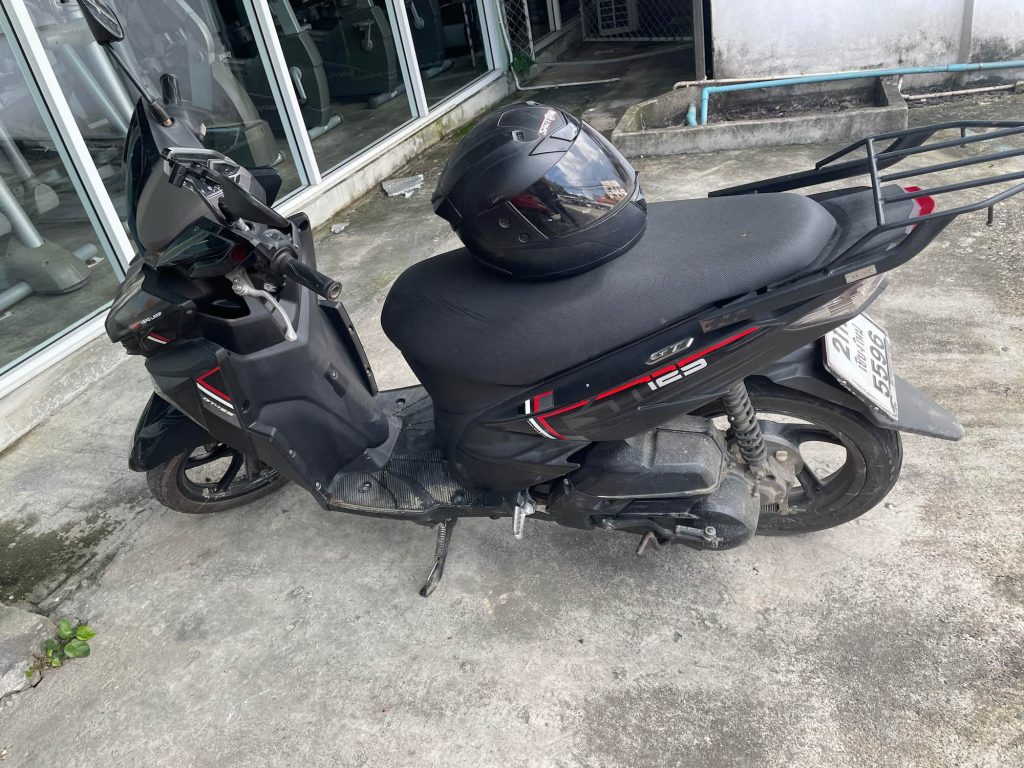
Helmet Mandatory, Helmet Quality Essential
By law, wearing a helmet is mandatory for both rider and passenger in Thailand. Don’t even think about riding without one. Not only will you face a fine if caught by the police, but more importantly, it’s about your safety. Many rental shops provide helmets, but often they are flimsy, ill-fitting, or old. Always inspect the helmet: ensure it has a working strap, isn’t cracked, and fits snugly. If they offer a poor-quality helmet, politely request a better one or consider buying a cheap, certified helmet from a local shop for a few hundred baht – it’s a small price for peace of mind.
The Pre-Ride Inspection: Your Camera is Your Best Friend
Before you sign anything or hand over any money, thoroughly inspect the scooter for existing damage. This means walking around the entire bike, checking every panel, the handlebars, mirrors, seat, and tires. Take clear, well-lit photos and a video of every single scratch, dent, or imperfection you find. Point them out to the rental agent and make sure they are noted on the rental agreement. This simple step can save you thousands of baht and endless headaches later on if they try to charge you for pre-existing damage. I learned this the hard way years ago, getting blamed for a tiny scratch I swore wasn’t there. Since then, my phone’s camera roll is my best defense.
Understanding the Rental Agreement
The rental agreement is often a simple one-page document. Read it. Understand the terms, especially regarding insurance (or lack thereof) and damage liability. Most rental shops in Thailand offer only very basic third-party liability insurance, if any, which covers damage to other vehicles but not the scooter you’re riding or your medical costs. You are usually 100% responsible for any damage to the rented scooter. This is why the pre-ride inspection and a good travel insurance policy are paramount.
Cost, Negotiation & My Own Rental Story
The typical rent cost for a scooter in Thailand varies slightly by location and season, but generally, for a standard 125cc-150cc scooter like a Honda Click or Yamaha GT, you can expect to pay anywhere from 200 to 300 Thai Baht per day. In smaller towns or for older models, you might find something for 150 baht, while popular islands like Phuket might see prices closer to 250-350 baht for newer models. Deposits usually range from 1,000 to 3,000 Thai Baht, returned upon the safe return of the scooter.
Here’s a savvy traveler’s hack: if you’re planning a long-term rental, say for a week, two weeks, or even a month, always negotiate. Rental shops are often open to offering a discounted daily rate for extended periods. I once rented a Honda Click 125cc in Chiang Mai for three weeks, and after a little friendly negotiation, I paid just 200 baht a day, down from their initial 250 baht daily rate. It adds up to significant savings over time! They just needed a copy of my passport and a cash deposit, no fuss. This flexibility in pricing is a common practice, so don’t be shy about asking for a better deal.
“Before anything else, preparation is the key to success.”
Advanced Road Smarts: Driving Laws, Road Conditions & What Scooter to Choose
Navigating Thai Traffic & Road Conditions
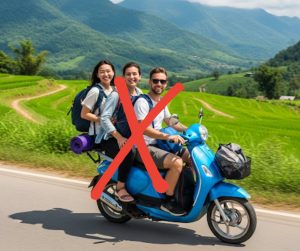
Thailand drives on the left-hand side of the road. This is a fundamental rule, but the chaos of Thai traffic can sometimes make you forget it! Expect unpredictable drivers: vehicles often pull out without looking, stop suddenly, or turn without signaling. Big vehicles, especially buses and trucks, will rarely yield. Be extremely defensive, assume others don’t see you, and always be prepared to react. Road conditions can vary dramatically from smooth, new asphalt to pothole-riddled dirt tracks, especially if you venture into rural areas or less developed parts of an island. Always keep an eye out for loose gravel, sand, and even stray animals on the road.
Police checkpoints are common, particularly in tourist areas. They are primarily looking for helmets and correct licenses. If you’re riding without a helmet or an IDP, you’ll likely be pulled over and fined. Pay the fine, get the receipt, and usually, you’ll be allowed to continue, often with a temporary waiver valid for 24 hours. The fines are typically around 500 baht per infraction. Never try to bribe an officer; it can lead to much bigger problems. Just comply, be polite, and pay the fine.
Most importantly: do not drink and drive. Not only is it incredibly dangerous and illegal, but it’s also a major cause of tourist accidents. The consequences, both legal and personal, are severe.
Recommended Scooter Models
When selecting your ride, I highly recommend opting for the latest Honda Click models (125cc or 150cc) or a Yamaha GT 125cc. These models are ubiquitous in Thailand for a reason: they are incredibly reliable, fuel-efficient, and parts/mechanics for them are found everywhere. They handle well, have enough power for two people and light luggage, and are generally very comfortable for city and island cruising. Avoid older, poorly maintained bikes, even if they’re cheaper. A breakdown in a remote area is not a fun experience. Before setting off, always check the tires for proper inflation and wear, test both brakes (front and rear), ensure all lights (headlight, tail light, indicators) are working, and check the horn. A quick daily check goes a long way in preventing issues.
Fuel is readily available at gas stations, which are plentiful in developed areas. In more rural spots, you’ll often see roadside stands selling gasoline in glass bottles (usually whiskey bottles). While convenient, be aware that this fuel can sometimes be diluted or of lower quality. Stick to official gas stations whenever possible.
Protecting Yourself: Insurance & Scams
The Truth About Insurance
This is where many travelers get caught out. Most standard travel insurance policies will NOT cover you for medical expenses or third-party liability if you’re involved in a scooter accident and you don’t hold a valid motorcycle license (i.e., your IDP with Category A endorsement). Before you even leave home, thoroughly check your travel insurance policy to understand its exclusions. Some policies offer specific add-ons for motorbike riding; it’s worth the extra cost. Remember, Thai hospitals can be excellent, but they are also expensive, and you will be expected to pay upfront if you’re not covered. Don’t risk it.
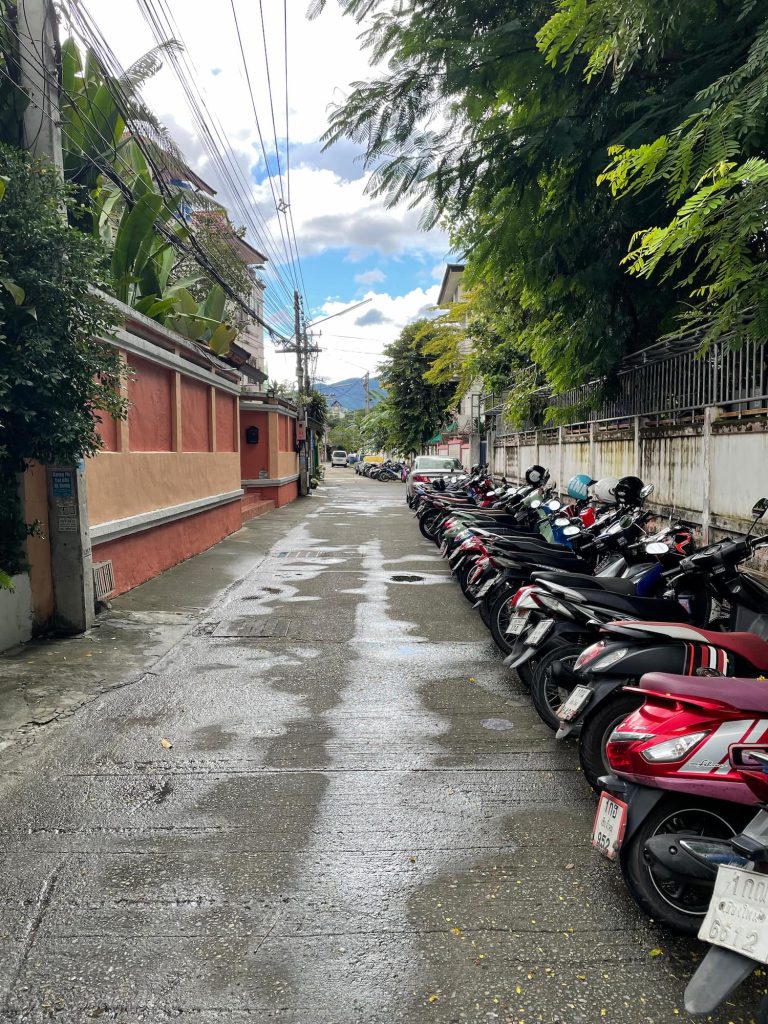
Avoiding Common Scams
Beyond the passport trick, another common scam involves inflated damage claims upon return. This is where your pre-rental photos and video are gold. Some rental shops might try to claim you caused damage that was already there. Be firm, show your evidence, and don’t back down. Another scam involves roadside “breakdowns” engineered by dishonest mechanics or tow truck drivers who then charge exorbitant fees for simple repairs. If your scooter breaks down, call the rental company first. If you’re truly stuck and need a local mechanic, agree on a price upfront before any work begins, just like understanding what not to eat in Thailand requires knowing the safe alternatives.
Niche Tips & The Freedom It Brings
Once you’ve mastered the rental process and basic safety, a scooter unlocks an incredible level of freedom. You can park virtually anywhere (just be mindful of traffic flow and local regulations, typically marked by no-parking signs or areas where people avoid parking). Google Maps is your indispensable co-pilot; download offline maps before you head out, especially if you’re venturing into areas with spotty signal. This allows you to truly immerse yourself in the vibrant street food scene and explore local markets with ease.
Don’t be afraid to ask locals for directions or assistance if you get lost or have a minor issue. Thais are generally incredibly friendly and willing to help. Just remember to be polite, use basic Thai phrases if you know them (hello, thank you), and smile. That said, don’t be overly reliant on strangers for mechanical issues unless recommended by a reputable source.
Finally, a few don’ts to reiterate: Don’t ride without prior experience (or get lessons before you go), don’t ride without a proper helmet, don’t ride drunk or under the influence of drugs, and don’t be overconfident. Thailand’s roads are beautiful but demand respect. Treat your scooter rental not just as a means of transport but as an adventure in itself, allowing you to easily explore Thailand’s best islands or delve deep into northern mountains. It’s truly the best way to uncover the country’s authentic charm.
Conclusion
Renting a scooter in Thailand is undeniably one of the most enriching ways to experience the country, offering unparalleled freedom and access to places off the usual tourist path. To recap, always remember these three crucial points: secure your International Driving Permit before you leave home, never surrender your original passport to a rental shop, and diligently photograph the scooter’s condition before you ride off.
These steps, combined with defensive driving and wearing a quality helmet, will mitigate most common risks. With this knowledge, you’re not just renting a scooter; you’re unlocking a deeper, more adventurous, and ultimately safer way to explore the Land of Smiles.







